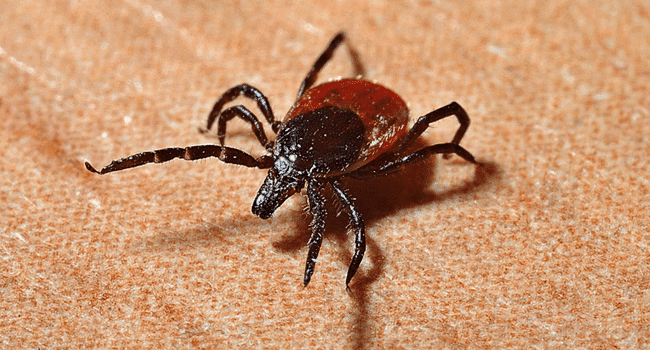Table of Contents
Most people associate ticks with pets, particularly dogs, as they love to run through long grass. But, the majority of ticks will happily suck blood from humans as well. Unfortunately, ticks can carry diseases which they can pass on to you.
The most commonly passed on diseases are Lyme disease, tularemia, and rickettsiosis. Without treatment, these diseases can cause serious harm to your body and, in some cases, even cause death.
That’s why there are two important steps you need to take if you are bitten, by a tick or notice a lot of them in your yard.
1. Be able to identify a tick bite
2. Click here to contact a pest control expert and eradicate them
Identifying A Tick
Ticks are actually classed as a type of spider and have eight legs. These are generally the same length and stretch out to the sides of their flat bodies. At the front they have two small fangs that help them to grip while they insert their feeding tube into your skin.
Before they feed ticks are generally flat, they become swollen after two or three days of feeding. That’s when they are ready to drop off your body and produce new ticks.
What A Tick Bite Looks Like
You are most likely to notice an ongoing tick bite when you look at or feel your skin. You’ll notice a bump that wasn’t there before. When you look closer you should see a small red area with a lump sticking out of it. This is the body of the tick, their head will be face down to help with the feeding process.
The longer the tick stays on you the larger it will get.
If the tick has already come off then you will simply have a red welt where it was. Unfortunately, it will look like almost any other bug bite.
It’s important to note that tick bites do not contain pus or any other sort of fluid. They will be itchy but the biggest clue to it being a tick bite is its location. Ticks generally bite the back of your neck, groin, legs, and perhaps the scalp.
Being bitten doesn’t mean you are infected with a disease. Equally, developing a rash after the bite can be an allergic reaction as opposed to a sign of disease.
The Bulls Eye
If you notice that the red area where you have been bitten is separated into two rings, one close to the bite and one further out, then it’s likely that you have been bitten by a tick with Lyme disease. It’s important to seek medical advice.
Removing Ticks
If the tick is still in your body you can’t just pull it out. It’s essential that you use tweezers or a special tool to grasp the tick at the base of its head and pull it out of your skin. If you don’t, you may leave some of the tick in your body and it could become infected.
Read more on KulFiy
Why You Should Train Your Pet Bird
How to Move Your Pet Safely and Comfortably
